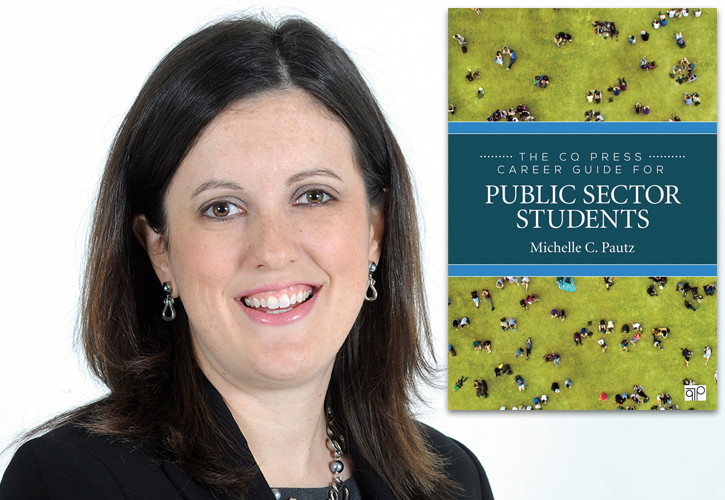College of Arts and Sciences Newsroom

Public Sector Career Guide
Most people don’t think about federal, state and local public services — or the people who deliver them — until the mail doesn’t arrive, roads become impassable or garbage isn’t picked up.
“It’s only when we turn on the tap and there’s no water that we think about the people who make those things happen,” said Michelle Pautz, University of Dayton assistant provost for the Common Academic Program and professor of political science. “People in the public sector usually stay in the background — unlike, say, Apple that has press conferences and huge events to announce a new iPhone. The FAA doesn’t announce the number of planes that landed safely every day. We just expect those things to get done.”
So it’s not surprising that few college students know about the many and varied careers in the public sector. Pautz is trying to fill that knowledge gap with her new book, The CQ Press Career Guide for Public Sector Students, published this year by CQ Press/SAGE Publications.
“It’s a way to introduce the public sector to undergraduate and graduate students, to demystify it, to explain its huge range from the mayor’s office to the Red Cross to the water treatment plant,” she said. “Most students don’t know what career paths the public sector might offer or where to start. I see the book as starting that conversation. I try to answer students’ questions, give them ideas about what courses to take and how to use those courses to build career skills, and encourage them to network. I wanted to write a book that I would have found helpful when I was in college.”
The 48-page book, designed to supplement other textbooks in courses ranging from introduction to government to senior public policy, defines and describes the public sector, and provides students with easy-to-follow strategies for maximizing their academic experience and co-curricular opportunities. “Application activities” throughout the book guide students through a process of developing a career path in a considered and effective way. Questions posed in those activities also prompt students to reflect on the steps they’ve taken along the way and find ways to adjust and adapt.
“I encourage reflection,” Pautz said. “While students look forward, they should also stop and think about what’s underlying their perceptions and attitudes about a field of study or type of work, what they know and what they need to learn. Students also need to know that it’s okay to try something, perhaps a class or an internship, and find out they don’t like it.”
The book is written in an easy, conversational style, as if Pautz were simply chatting with a student in her office in the Ryan C. Harris Learning Teaching Center. Additional “conversations” are Pautz’s interviews with former students and colleagues working in the public sector who discuss their career paths, courses and internships they found most useful, and types of courses they wish they had taken.
The idea for the book came from the publisher of Pautz’s other most recent work, Public Policy: A Concise Introduction, which she wrote with Sara Rinfret, associate professor in the Public Administration and Policy Department at the University of Montana, and Denise Scheberle, clinical teaching professor for the School of Public Affairs at University of Colorado-Denver.
“It ended up becoming a welcomed opportunity and cathartic to discuss the public sector, especially at this time politically,” Pautz said. “Although I didn’t discuss the service aspect of public sector work — because the publisher wanted the book to be more hands-on — we know that government work, and work with NGOs and nonprofits is all about service.”
- Annette Taylor
